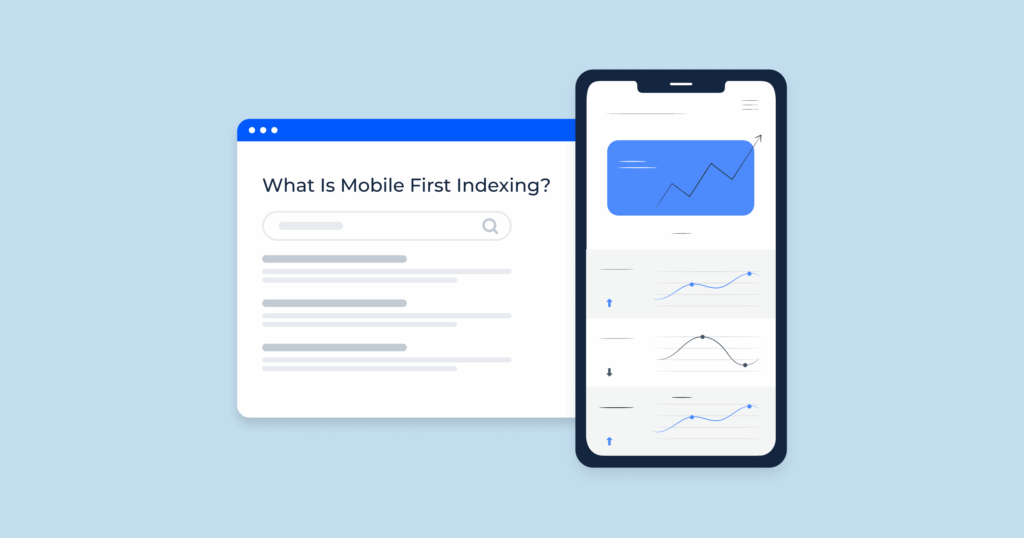In a digital ecosystem that’s constantly evolving, it’s easy for once-groundbreaking concepts to feel like yesterday’s news. One such concept is mobile-first indexing—Google’s method of prioritizing the mobile version of a site for crawling and ranking. Introduced in 2016 and fully rolled out by 2023, mobile-first indexing was a direct response to shifting user behavior. With more than half of global web traffic now coming from mobile devices, Google’s approach made perfect sense.
But as 2025 introduces AI-generated search results, zero-click interactions, and multimodal experiences, a pressing question emerges: Is mobile-first indexing still relevant, or is it now outdated?
Let’s break it down.
What Is Mobile-First Indexing?

Mobile-first indexing means that Google predominantly uses the mobile version of your content for indexing and ranking. Previously, Google crawled and evaluated the desktop version of a page. But as mobile usage surged, the search giant shifted priorities to reflect how people actually consume web content.
Mobile-first indexing affects:
- Crawling: Googlebot primarily crawls the mobile site.
- Indexing: Only mobile content is considered if there’s a difference between mobile and desktop versions.
- Ranking: Pages are ranked based on the mobile experience, including performance and usability.
Why It Mattered (Then)
When mobile-first indexing was announced, many websites maintained separate mobile and desktop versions, often with stripped-down or different content on mobile. This caused inconsistencies in indexing and user experience.
The shift pushed web developers and site owners to:
- Implement responsive design.
- Serve the same content across all devices.
- Optimize for mobile speed and usability.
Mobile-first indexing ensured Google’s rankings matched the reality of user behavior, which had already gone mobile.
What’s Changed Since Then?

1. Responsive Design Became the Norm
Most modern websites now use responsive design frameworks (like Bootstrap or CSS Grid) to deliver a unified experience across devices. This has largely solved the issue of mismatched content between desktop and mobile versions.
2. Desktop Usage Stabilized
While mobile dominates in many categories (local search, eCommerce, entertainment), desktop still holds ground in others—especially B2B, technical research, and workplace browsing. Google’s decision to focus solely on mobile indexing, even for desktop-only users, has raised some concerns about oversimplification.
3. Rise of AI-Generated and Voice Search
As AI models begin summarizing content directly on the SERP and voice search continues to grow, the way people find and consume information is less tied to specific devices. This shift makes the device-specific focus of mobile-first indexing feel slightly less aligned with how search is evolving in 2025.
4. Core Web Vitals and UX Now Dominate SEO
Google’s ranking algorithms now emphasize page performance, interactivity, and visual stability, regardless of device. While mobile metrics matter, so do desktop experiences and accessibility.
Is Mobile-First Indexing Still Relevant?
Yes—but not in the way it once was.
Mobile-first indexing is still the default crawling method for Google. If your mobile site performs poorly or lacks key content, your rankings will suffer. However, for most modern sites using responsive design and consistent content delivery, mobile-first indexing is no longer a pressing SEO concern—it’s a baseline expectation.
In other words: It’s relevant, but not revolutionary.
Think of it like HTTPS or site speed—it’s not a differentiator anymore; it’s simply part of doing business on the web.
Where It Still Matters
1. Sites with Separate Mobile and Desktop URLs
If you’re still using m.example.com or dynamic serving for mobile, you must ensure content parity. Any missing content, structured data, or internal links on mobile can directly impact search visibility.
2. Slow Mobile Performance
Even with responsive design, mobile speed and usability matter. Mobile-first indexing means Google prioritizes how your site performs on smaller screens. Large popups, unoptimized images, and clunky navigation can hurt rankings.
3. New Sites Launching in Niche Industries
Emerging brands targeting mobile-first audiences—especially in travel, local services, or lifestyle—still need to heavily optimize their mobile experience from day one.
Where It’s Becoming Less Central
1. AI and Multimodal Search Environments
With AI tools now summarizing search results, referencing sources, and handling follow-up queries, the content format and quality matter more than the specific device it’s served on. AI-generated search may eventually rely more on semantic understanding and content structure than mobile-specific traits.
2. Desktop-Heavy Audiences
If your target audience works primarily on desktop (e.g., enterprise software buyers, academics, developers), obsessing over mobile-first details may offer diminishing returns. Focus instead on clarity, accessibility, and UX across all devices.
3. Zero-Click & Voice Search
In contexts where users don’t even visit your site (such as voice search or AI-generated summaries), mobile-first indexing is somewhat moot. What matters more is how well your content answers questions, is structured semantically, and is trusted as a source.
What to Focus on in 2025

Rather than obsessing over “mobile-first indexing,” focus on:
- Responsive, accessible design across all devices.
- Fast loading times—especially on mobile networks.
- Structured content that AI can understand and summarize.
- Consistent metadata and schema markup on all versions.
- Content parity—don’t hide valuable info on desktop or mobile.
- Great user experience, regardless of screen size.
In other words: mobile-first indexing is table stakes. But success in 2025 SEO requires going beyond that foundation.
Final Thoughts
Mobile-first indexing served as a wake-up call during a time when many websites were still treating mobile as an afterthought. In 2025, it’s no longer a revolutionary shift—it’s the standard. But its legacy still matters. Mobile-first indexing helped force the web toward better, more accessible, and responsive design.
Today, the focus has broadened. Search is becoming device-agnostic, AI-enhanced, and more intent-driven than ever. The winners will be those who create content that’s fast, clear, and valuable—across all platforms.
So, is mobile-first indexing still relevant?
Yes. But it’s no longer the destination—it’s just the starting line.






